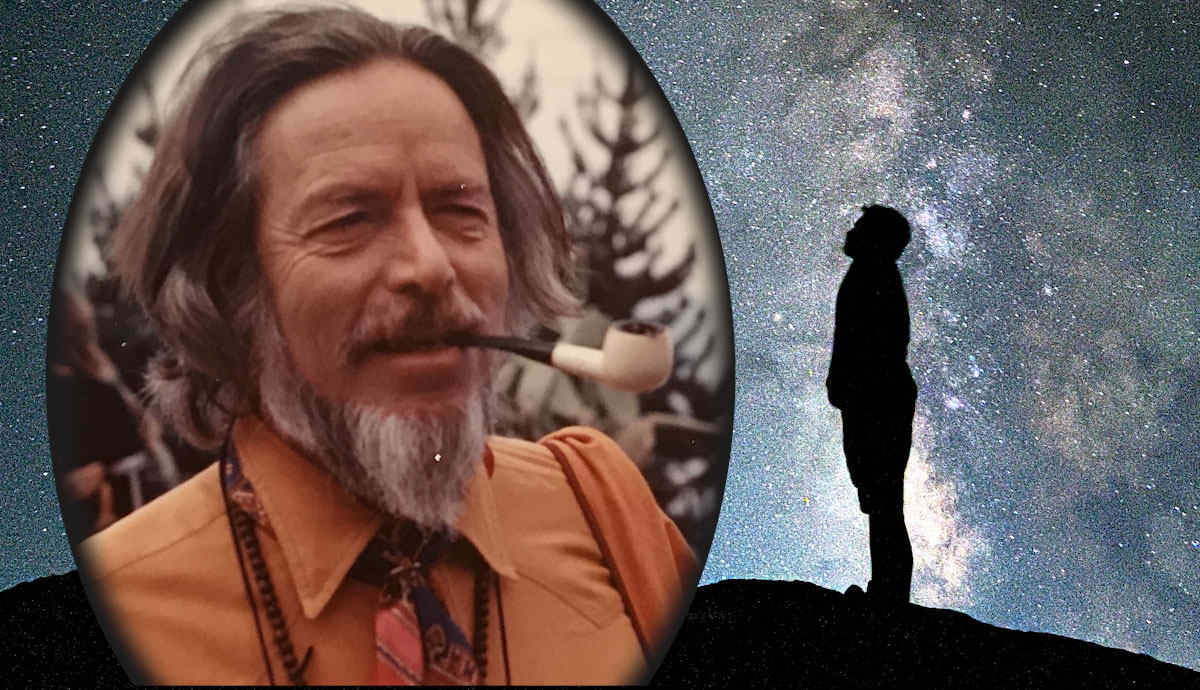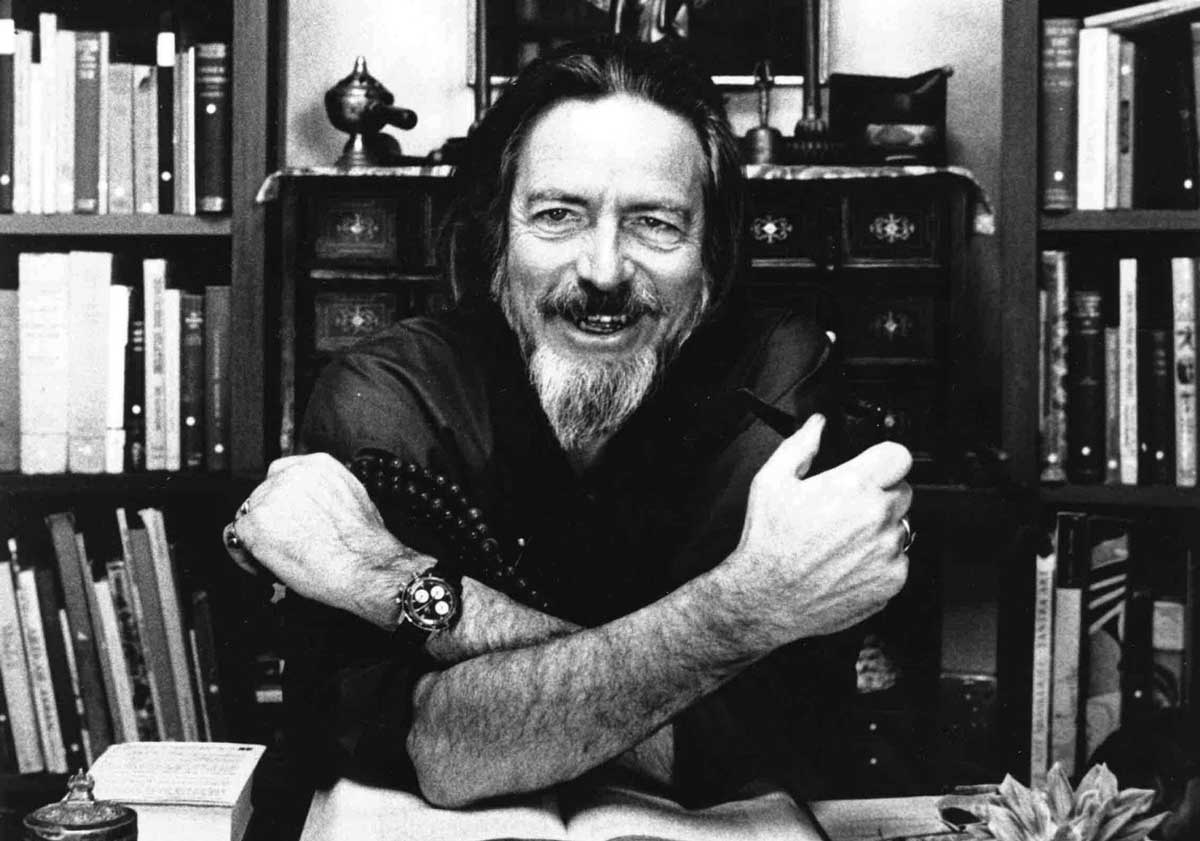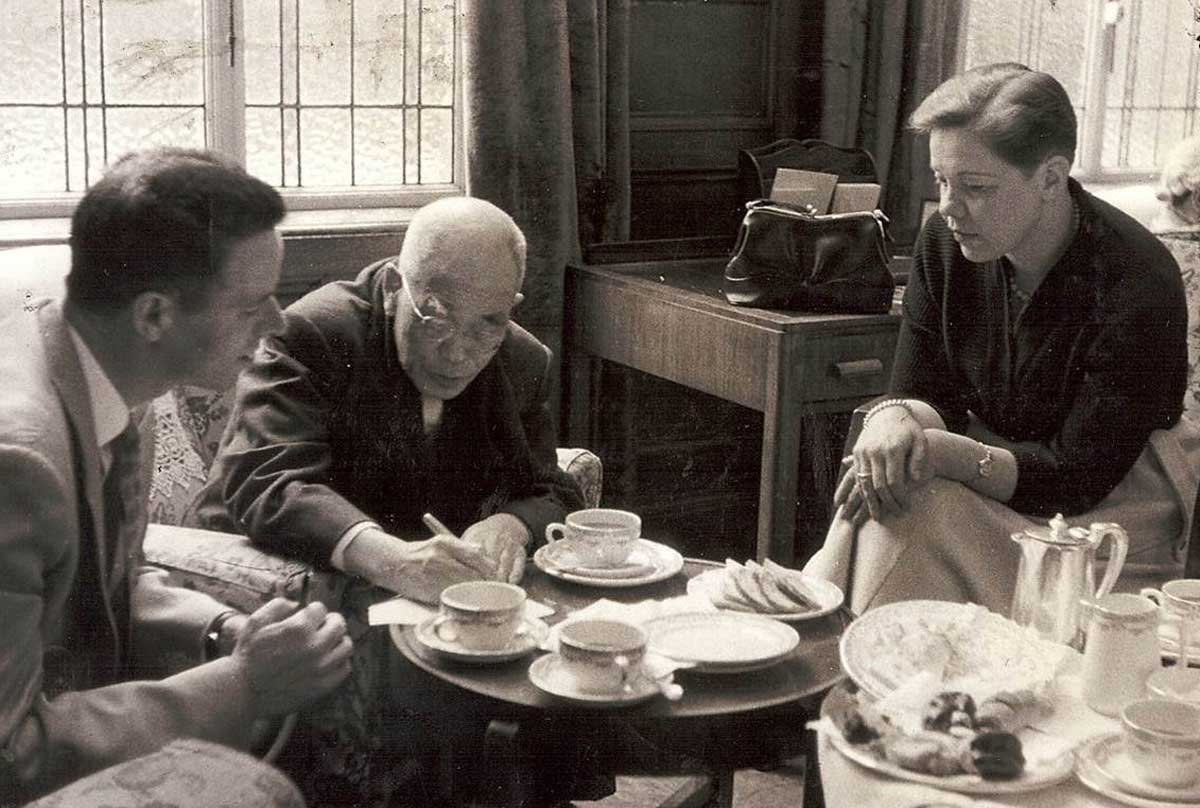
Alan Watts was born in 1915 and was a prolific English author and speaker on Eastern philosophies; he was passionate about introducing these ideas to a Western audience. His books, like Behold the Spirit (1947) and The Way of Zen (1957), focused on exploring Zen Buddhism in the context of Anglican theology and expressing his personal mystical experiences. Watts spent most of his life interpreting Japanese, Chinese, and Indian traditions of Buddhism, Taoism, and Hinduism, presenting his knowledge in a way that Western cultures could absorb. Here is an outline of his early life, the beginning of his career in writing and teaching, and three influential books that helped define his work.
The Early Life of Alan Watts

Alan Watts was born in 1915 to a middle-class family in southeast London. His father was a businessman for the Michelin tire company, and his mother was a housewife. Her father was a missionary, and growing up around religious relatives influenced Watts’ own interest in spirituality.
His fascination with Eastern culture began at an early age; a fever dream he experienced as a child involving Chinese landscape artwork stuck with him throughout the years. Noticing his thoughtful and curious disposition, his parents encouraged him to write, and he became an editor for the London Buddhist Lodge’s journal The Middle Way as a teenager. After attending Christian boarding schools and feeling distant from the ideology preached, he chose to pursue Buddhism, at which point he become involved at the Lodge.
He attended The King’s School, Canterbury, and worked in a printing house and a bank following his education. He became a student of philosopher Dimitrije Mitrinović and continued to consume readings on philosophy, psychology, and Eastern teachings. Primarily being self-taught, he built a network through the Buddhist Lodge with well-renowned spiritual figures like mystic Nicholas Roerich and theosophist Alice Bailey. The admired Zen Buddhism scholar D. T. Suzuki presented at the World Congress of Faiths at the University of London. At 21, Watts had the opportunity to meet him there and absorbed more information about Indian and East Asian philosophy.
The Start of Alan Watts’ Career

Get the latest articles delivered to your inbox
Sign up to our Free Weekly Newsletter
Watts published his first book, titled The Spirit of Zen, the same year he met Suzuki. Interestingly enough, in his book The Way of Zen he wrote 20 years later, he debunked and criticized much of what he had written previously.
He was taught a lot under the mentorship of Zen master Sokei-an Sasaki, who was connected to him through his wife, Eleanor Everett; her mother, Ruth Fuller, was married to him. The couple moved to the United States in 1938, and Sasaki became a US citizen five years later.
In Illinois, Watts attended Seabury-Western Theological Seminary, an Episcopal school. He published his master’s thesis in theology, titled Behold the Spirit: A Study in the Necessity of Mystical Religion. He strived to integrate Christianity and Asian philosophy together; one example of this is demonstrated in his book Myth & Ritual in Christianity (1953), which combines traditional Roman Catholicism with the rituals of Buddhism.

In 1951, Watts moved to San Francisco and taught Buddhism at the American Academy of Asian Studies. His lectures were highly popular, and even the wider public was allowed to attend due to the class’s popularity. Two years later, he became a radio host on Berkely’s Pacifica Radio station KPFA, with a broadcast series, “The Great Books of Asia” and “Way Beyond the West.” This transitioned into the longest-running public radio series on KPFK in LA at 60 years. Referencing back to The Way of Zen, he released this iconic book in 1957, which combined the Indian and Chinese philosophy of Zen with general semantics and cybernetics.
He was greatly involved with academic institutions, teaching Comparative Philosophy at the California Institute of Integral Studies, having a fellowship at Harvard University (1962-1964), and studying at San Jose State University (1968). He was a frequent lecturer at universities, yet he was still deemed an outsider in academic circles.
His ecological concerns were voiced in a NET (National Educational Television) episode shot at his mountain retreat in 1971. In 1973, he died in his cabin, possibly of complications with treatment for a heart condition potentially connected to alcoholism. His last book, titled Tao: The Watercourse Way, was published posthumously, in 1975, and explored his perspective on Taoism.
1. The Wisdom of Insecurity (1951)

In 1951, Watts’ book The Wisdom of Insecurity: A Message for an Age of Anxiety was published. To address the anxious state of the world due to many unknowns and incomprehensible phenomena, he looked to Buddhism for wisdom. Instead of striving for a security that may not exist, he teaches the importance of living in the moment and welcoming the reality of uncertainties.
Stress about the future is a common human experience, and many turn to things like religion or material possessions to cope. Although these may provide some comfort, it’s bound to be fleeting since the future remains fluid. Our natural tendency to find ways to avoid suffering is pointless since pain is inevitable and necessary to experience pleasure.
Instead of giving in to this anxiety, Watts urges us to see that humans can control the future. Acknowledging the mind-body connection is one way to join the inner world to the outer world, which can bring peace to conflict. He believes we are all unified, making up a greater consciousness that binds humanity together. By halting thought processes that attempt to make sense of what can’t be explained, staying in the present can free an individual from crippling fear about what’s to come. Chasing happiness outside your inner self will lead to dissatisfaction; constantly running after something that won’t sustain the state you desire is a waste of energy.
“The brain can only assume its proper behavior when consciousness is doing what it is designed for: not writhing and whirling to get out of present experience, but being effortlessly aware of it.”
2. Nature, Man and Woman (1958)

Nature, Man and Woman was written by Watts and published in 1958. He explores the marriage between nature and spirituality that Chinese Buddhism preaches, which is lacking in Western Christianity. The latter’s ideology separates God from nature, which isolates sexuality and leaves no room for its acceptance.
To reconnect with nature, the animal kingdom should be our models, as they inhabit the earth too and don’t fight it. Watts believes our perception of nature as peaceful is ignorant; in reality, it is full of suffering, which explains why humans may find a way to detach themselves from it. Understanding nature with a framework of complexity is meaningless; if our physical bodies and nature are seen as unified, it becomes simplified.
“Man when living is soft and tender; when dead he is hard and tough. All animals and plants are tender and fragile; when dead they become withered and dry. Therefore it is said: the hard and the tough are parts of death; the soft and tender are parts of life.”
A high value is placed on celibacy in both the East and West, which translates to men perceiving themselves as the property of God in the same way that a woman is the property of a husband. But Watts emphasizes the significance of spontaneity, and how the belief in an omnipotent higher entity stifles both creativity and natural sexual nature.
Imagining instead that God is “formless” is a manifestation of spontaneity going against logic. In his mind, this correlates to sex; it’s most powerful when it’s morally good, of course, but most importantly, not planned deliberately. Watts sees God as the artist behind our beautiful planet that spontaneously grows, not as the legalistic ruler taught within the confines of a church.
3. The Joyous Cosmology (1962)

Watts’ book The Joyous Cosmology was published at the start of the psychedelics movement of the 60s. Scientific research of hallucinogenic drugs was highly endorsed at the time. Once the 70s hit, however, psychedelics were banned from research, and the craze slowly began to die down. The initial response to this book was strong due to its focus on psychedelics, but its popularity faded with the drug scene until the 90s when drugs like LSD began to garner interest once again. Many people rediscovered or found the book for the first time in this second awakening.
Three main sections make up The Joyous Cosmology. Watts begins by exploring his issue with specifically Western culture’s delusional thinking in terms of ego alienation, which he believes could be unpacked with psychedelics. He follows this by outlining his personal experience under the influence. This displays the real sensations that can be produced from this state of altered consciousness. The book concludes with an interpretation of the mind’s journey with psychedelics, proposing that the ego appears to be less dominant than we believe.

His audience is primarily one unfamiliar with Eastern teachings of Taoism and Zen Buddhism, and he strives to enlighten them to the wonders of these harmonious belief systems. Watts hopes his readers will see how connected individuals are to the environment and to others in ecological terms. If not, he believes that:
“Lack of awareness of the basic unity of organism and environment is a serious and dangerous hallucination. For in a civilization equipped with immense technological power, the sense of alienation between man and nature leads to the use of technology in a hostile spirit.”
One of the main reasons for Watts’ beliefs and his motivation to share them was his desire to connect ancient and modern cultures, the East and West, along with humanity and nature. He spoke of harmony, and his life reveals that he practiced what he preached.
Beyond the individual, he believed in the importance of social ethics to lead to spiritual realization within the inner self. His ideology revolved around communal ideals and reached far beyond himself as one human being. Pantheism and modern science combined with Hinduism and Chinese philosophy formed his beliefs in cosmology, which was the foundation of his thoughts on humanity’s purpose. Watts’ prolific career and extensive knowledge of Eastern philosophy greatly influenced Western culture and introduced a new way of thinking to many who lacked this wisdom.








